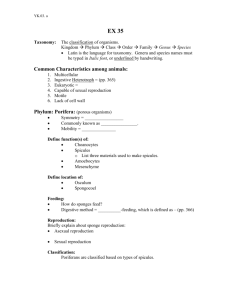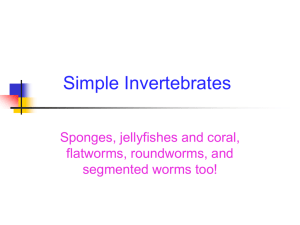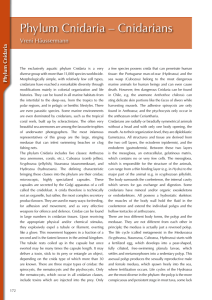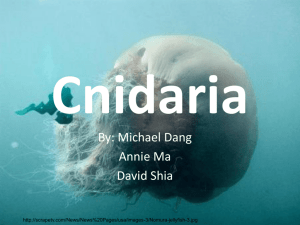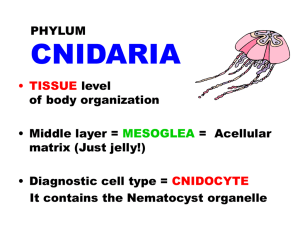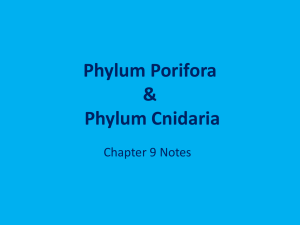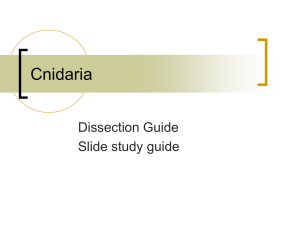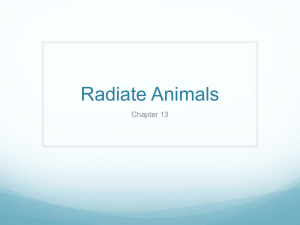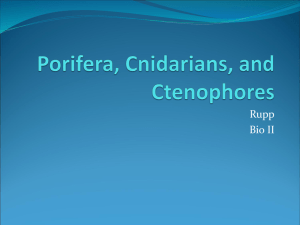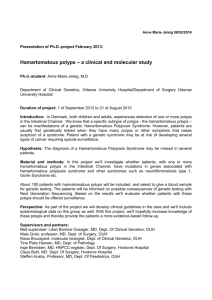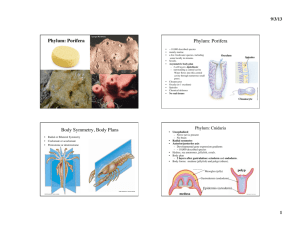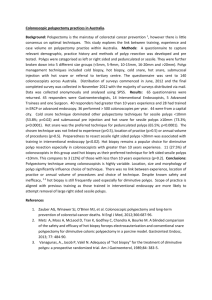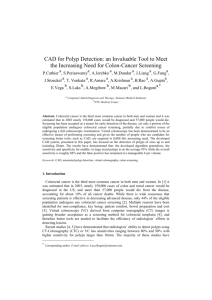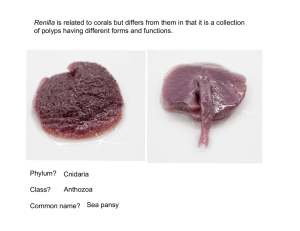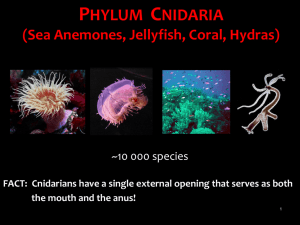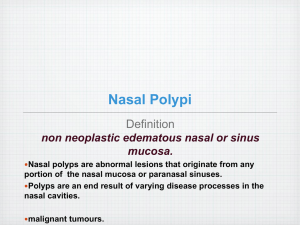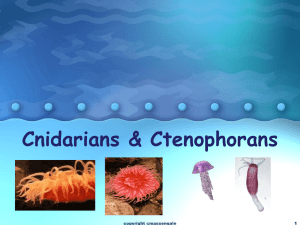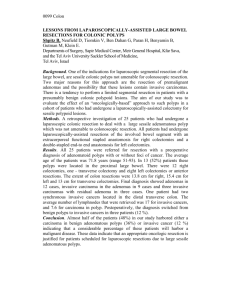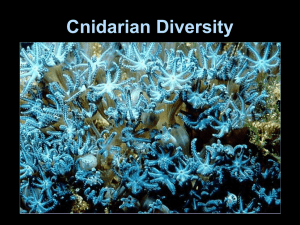ppt
advertisement
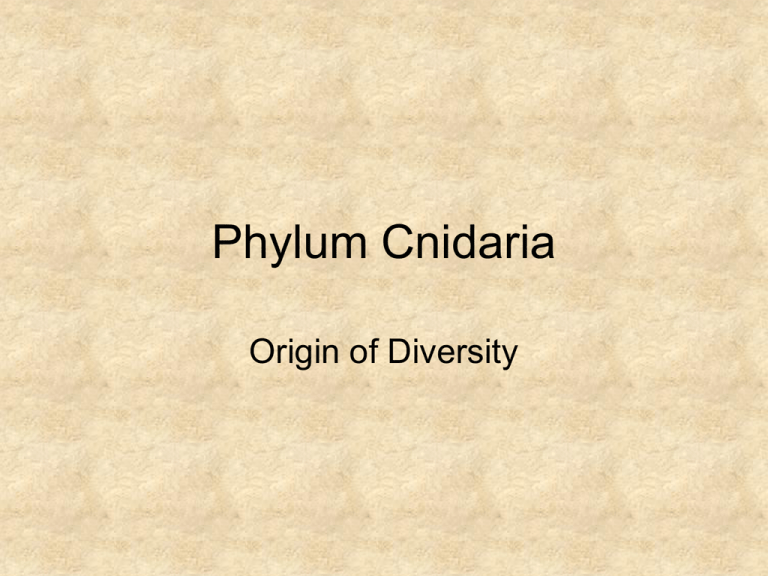
Phylum Cnidaria Origin of Diversity How has so much diversity been possible in the Phylum Cnidaria 1. Polyp and medusa forms – Provide the basic diversity by offering two different ways of life • • Polyp – sessile Medusa – free-swimming – Some taxa have both forms in life history How has so much diversity been possible in the Phylum Cnidaria 2. Colony formation – Most common results of budding ability of many polyps • Allows increase in size without expanding mesoglea (in medusae), or support structures and digestive surface area (in solitary polyps) – Larger area can be swept for food – Share food through a common coelenteron How has so much diversity been possible in the Phylum Cnidaria • Colony formation – Most common results of budding ability of many polyps • Allows for division of labor – Ex. Feeding and reproductive polyps -Velella – Ex. Feeding and stinging polyps are differentiated in Siphonophores – Physalia – Ex. Polymorphism in in Hydractinia » Planula settles on shell and develops into primary polyp: forms mat of branching stolons » Buds into four types of polyps Physalia Siphonophores: Highly developed polymorphism among polyp types. Division of labor between individual polyps resembles organ systems of more highly organized animals. Velella Defense Hydractinia tentaculozooids Defense Nerve net connects all polyps through stolons Metamorphosis is triggered by unknown cues from bacteria found on the hermit crab shell. How has so much diversity been possible in the Phylum Cnidaria 3. Coral Formation – Extends range and size possible for colonies • Milliporine corals (Hydrozoa) – Skeleton is laid down outside the ectoderm of each polyp • Alcyonaria (Anthozoa) – Skeleton is laid down in the mesoglea by ectoderm cell • Madreporaria (anthozoa) – Skeleton is laid down underneath the polyps Alcyonaria Milliporaria Madreporaria How has so much diversity been possible in the Phylum Cnidaria 4. Unusual lack on constraint on cell movement and differentiation – Allows for extraordinary complexity of Cubozoans – Degree of coordination of Hydractinia colonies 5. Amazing genetic complexity – Unlike much more than more elaborate inverts – Almost near that of vertebrates
